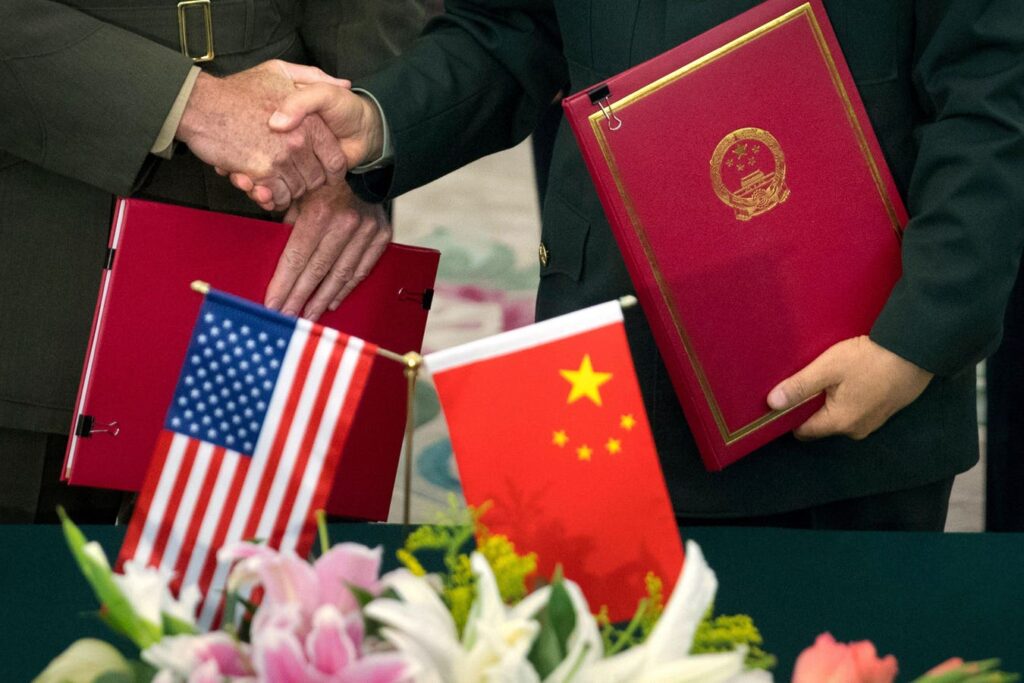The U.S. and China reached an agreement over the weekend to stave off their unusually high import tariffs on each other’s countries. Stock markets positively responded to the news in early Monday trading. While the reduction in tariffs likely diminishes the direct impacts on companies, the greatest positive effect contributing to the stock market rise may be lower uncertainty as businesses head into the next phase of this ongoing trade war.
U.S. President Donald Trump announced via the White House’s X account that a trade deal with China had been reached. While the details are still being resolved, NBC News reported that U.S. tariffs on Chinese imports will be cut from 145% to 30%. Meanwhile, the Chinese tariffs on U.S. imports will fall from 125% to 10%.
News of this agreement sent the global stock markets soaring upward. U.S. stock market futures for the Dow Jones, S&P 500, and NASDAQ indices were up 2.68%, 3.16% and 4.03%, respectively. As I previously discussed on Forbes, three reasons why the Trump reciprocal tariffs introduced on Liberation Day tanked the stock markets were:
- Lowered future revenues for companies;
- Other countries imposed reciprocal tariffs; and
- Increased stock market uncertainty.
The proposed trade deal with China directly addresses all three concerns, namely the final point of resolving uncertainty.
The U.S.-China trade war has persisted for over three months, beginning on February 1, when Trump first imposed a 10% tariff on all Chinese imports. China then responded with a 15% tariff on many U.S. products. The countries continued to go back and forth until April 2 (Liberation Day), when Trump raised the tariff on Chinese imports to 54%. Even a week later, when Trump issued a 90-day pause on all import tariffs, rather than lowering those tariffs for China, he doubled down by sending them to a staggering 145%.
This constant change in the U.S. tariff policy has led many executives to feel a sense of uncertainty. The New York Times reports that CEOs have been paralyzed by their inability to predict what the future would hold for their supply chain and the cost of bringing in goods, parts, and machinery into the U.S. Meanwhile, the Washington Post documented how small business owners have griped that they simply cannot keep up with the costs of the tariffs, and that them having to weather the storm means that they need to consider whether it is a better business decision to close up shop.
Business leaders from all over the world have already applauded the U.S. and China coming to a trade agreement. As reported by Reuters, Sheldon MacDonald, the CIO of Marlborough in London, stated, “The market is going to see this as confirmation that Trump doesn’t really want to cause the sort of disruption he has previously seemed to embrace.” Reuters also reported that Zhiwei Zhang, chief economist of Pinpoint Asset Management, stated, “Obviously, this is very positive news for economies in both countries and for the global economy, and makes investors much less concerned about the damage to global supply chains in the short term.”
A key piece to this is the notion that Trump appears ready and willing to come to the negotiating table to resolve some of the uncertainty over the U.S. tariffs. China was long seen as a dominant player and among the very few countries that took a stand against Trump’s tariffs announced on Liberation Day. If a deal could be made between the U.S. and China, then there is renewed optimism that Trump could make a deal with any other country.
A key caveat to this agreement is that it only lasts for 90 days. This temporary agreement means that the two sides will need to continue their talks over the next three months to stave off recommencing their global trade war. In the meantime, it appears the uncertainty has eased, which equity investors believe will help usher in positive effects felt throughout the U.S. economy.
Read the full article here

